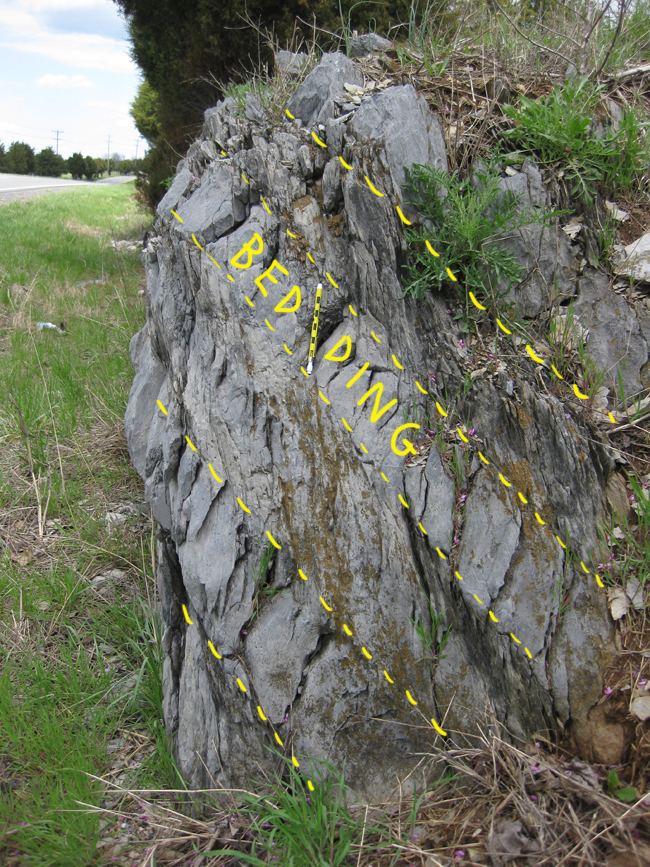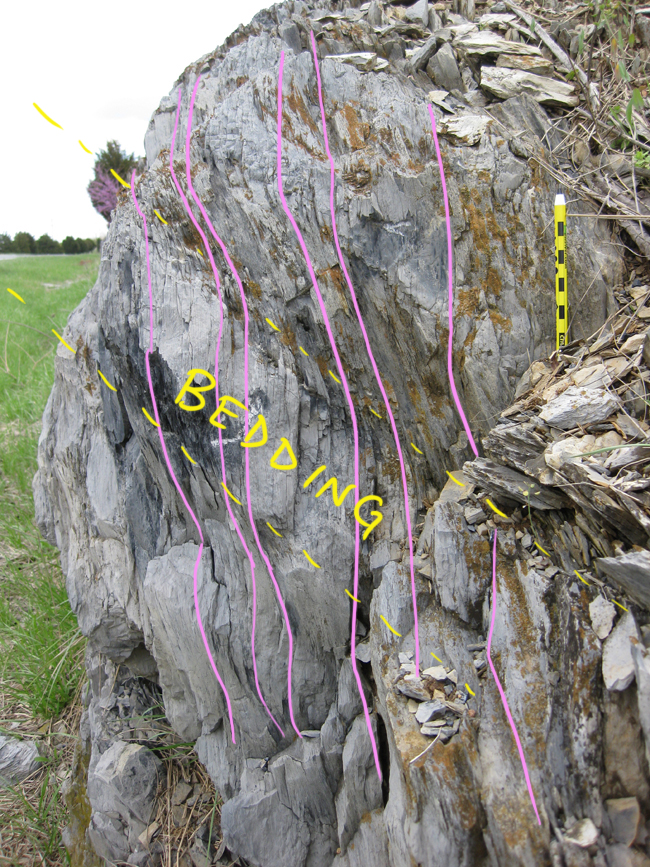Here’s a little scene along Route 340 / 522, north of Front Royal and south of Double Tollgate, Virginia, in the Shenandoah Valley:

The rock here is limestone and shale of the Edinburg Formation, a late Ordovician unit that records the transition from passive margin sedimentation to the increasingly ‘dirty’ clastic influence of the Taconian Orogeny. Have a look:

I hope you’ll notice there are layers of two distinct lithologies there, and that not only are they different thicknesses and colors, but one is much more cleaved than the other.

Bedding (both shale and limestone) dips moderately to the right (east-southeast):

…But cleavage is close to vertical, though the exact angle depends on which lithology you look at:





Though these strata were originally deposited during the Ordovician, they were folded and cleaved during the late Paleozoic, whenancestral Africa and North America smashed into one another and made the Appalachian mountain belt running through the heart of Pangaea. To me, the best sorts of outcrops have this sort of duality to their stories. They tell about one thing happening at one time, and then something else happening at another time. In other words, this rock isn’t just one age, and it doesn’t represent just one process. It contains multitudes.
And, it’s beautiful:

Have you ever seen a more lovely example of cleavage refraction (and variation in spacing) across different strata?


To me, it doesn’t get too much better than that.
The fact that the redbuds (Cercus canadensis) were in full bloom that day was the icing on the cake:

